Happy August everyone!
August means Albert and I are getting married this month, officially tying the knot!
For those of you who don’t know, I came to Utica to follow my heart and be with my fiancé, Albert G. Tahan! Along the way, I found a great community to be a part of, a family who accepts me as their own and a dental office to call my dental home.
I hope your August is meaningful and full of love as well. Thank you again for joining in on this month’s “Smile with Dr. Suy” and our continuing series “Defining Dentistry.”
Sleep apnea is a serious sleep disorder where you have periodic interruptions of breathing during your sleep. There were more than 200,000 people diagnosed with sleep apnea last year in the United States alone.
Patients with untreated sleep apnea literally stop breathing in their sleep, losing oxygen to their brain and remainder of their body during that time. These occurrences vary by individual but can be up to hundreds of times per night.
There are two types of sleep apnea:
• Obstructive sleep apnea: The most common of the two types, this form of sleep apnea is when the airway is blocked during sleep, usually due to our soft tissues of the back of our throats impeding the opening. Snoring is commonly associated with obstructive sleep apnea.
• Central sleep apnea: Unlike obstructive sleep apnea, central sleep apnea patients have a perfectly open airway. With central sleep apnea, the brain signals that normally would tell us to breathe in our sleep are failing to do so.
Are you at risk?
While everyone can potentially have sleep apnea, it has been linked with being male, overweight, over 40 years old; having a large neck size (over 16-17 inches); having large tonsils-tongue; having a small jaw; family history of sleep apnea; nasal obstructions due to deviated septums; allergies or sinus problems.
Side effects of sleep apnea include high blood pressure, stroke, heart failure, diabetes, depression, worsening of attention deficit hyperactivity disorder, headaches, and poor performance in everyday activities.
How is it treated?
Patients can help change their prognosis by doing things such as losing weight, avoiding alcohol or sleeping pills, and changing sleep positions.
Other doctor-assisted treatments include surgery and at-home devices.
There are two main treatments for patients for home:
• Continuous positive airway pressure (CPAP): This treatment is essentially a facemask that you wear during sleep. The mask is hooked to a machine that delivers airflow, and the air keeps your airway open so breathing is regular. This is the most common treatment for sleep apnea.
• Dental mandibular repositioning device: Your dentist administers this treatment.
The dental device is made from dental impressions in your mouth and is worn during sleep. The device moves your lower jaw forward to allow your airway to stay open during the night.
While not as commonly used as the CPAP, dental devices help more patients as knowledge of their existence is made more aware. Most patients now are 50% CPAP and 50% dental device users.
If you think you have sleep apnea, feel free to call your dentist and start breathing again.
I hope this column has helped increase awareness of the dentist role in the treatment of sleep apnea.
As always, thank you for joining me in this month’s education series and hopefully we will learn more together next month.
Please feel free to contact me with questions and comments.
• Dr. Salina Suy is a health and wellness advocate and general dentist in Utica. Want to learn more? Visit Facebook @smilewithdrsuy or www.smilewithdrsuy.com.


 2607 Genesee St., Utica, NY 13501
2607 Genesee St., Utica, NY 13501  315-724-3197
315-724-3197 